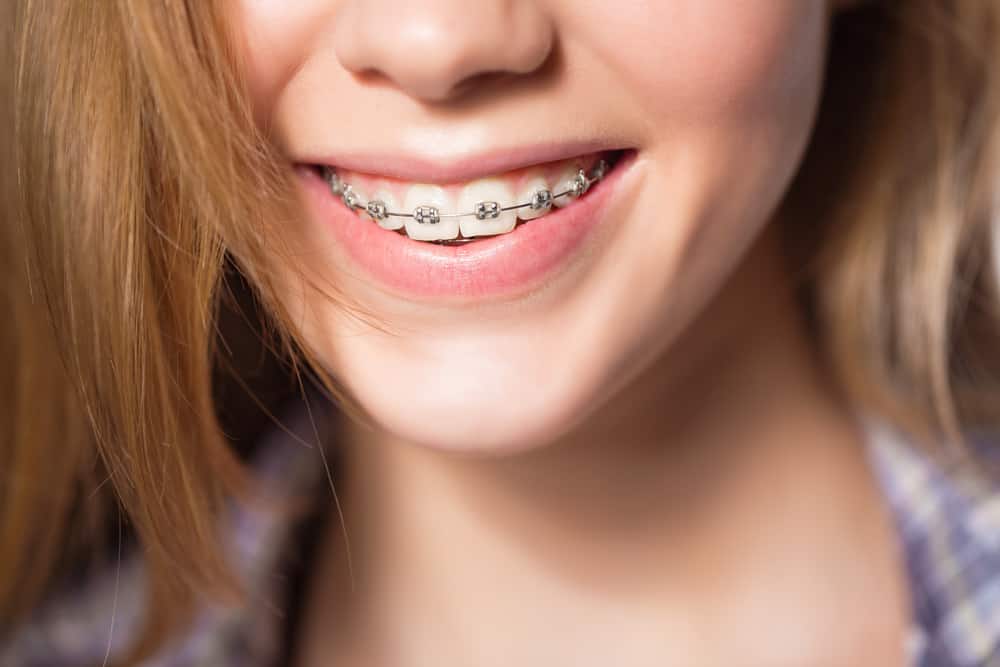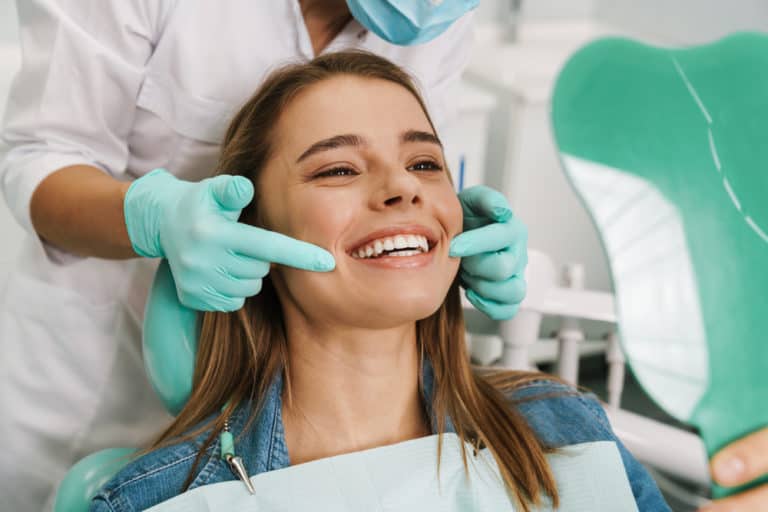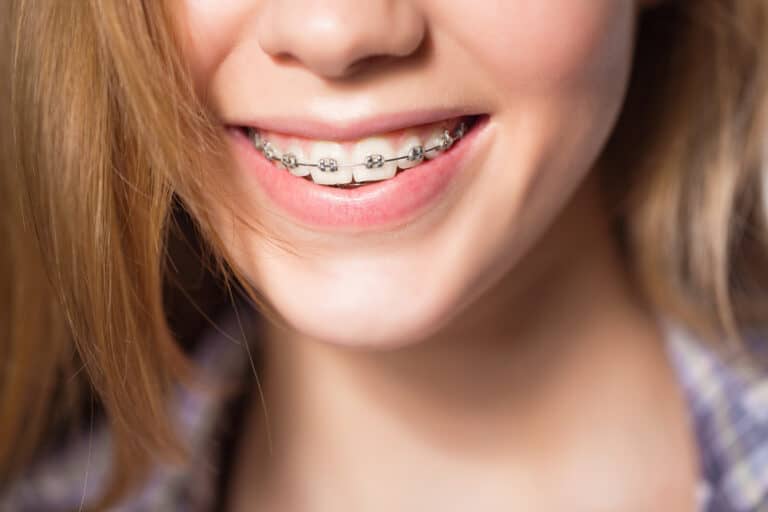According to the Australian Society of Orthodontists, over 500,000 Australians wear braces to straighten their teeth.
Braces are a popular tool used to correct misaligned teeth and jaws, resulting in a healthier and more attractive smile.
This article will explore the types of braces, how braces work, the benefits of braces, and what to consider when preparing for and caring for braces.
What are Braces?
Braces are a common orthodontic treatment used to correct misalignment of teeth. Orthodontic braces are an effective solution for individuals with crooked teeth, crowded teeth, or other irregularities in the mouth. Traditional metal braces, ceramic braces, and lingual braces are the three types of braces most commonly used to treat these types of issues.
Traditional metal braces are made of metal brackets and wires and can be adjusted for desired results. Ceramic braces are similar to traditional metal braces but are made of a clear or tooth-coloured material and are less visible. Lingual braces are also similar to traditional braces but are placed on the back side of the teeth, making them nearly invisible.
These orthodontic treatments can be used to improve the appearance of teeth, but they also play an important role in oral health. By properly aligning crooked and crowded teeth, orthodontic braces can help reduce the risk of tooth decay and gum disease. Furthermore, braces can help improve the patient’s speech and chewing abilities, as well as their confidence.
Types of Braces
Orthodontic treatment can involve the use of a variety of devices for the purpose of correcting misaligned teeth. Such devices include metal brackets, arch wires, orthodontic bands, and dental braces, all of which are used to move teeth into the desired correct position.
Metal braces are composed of stainless steel brackets and arch wires and are the most common type of braces. Ceramic brackets are an alternative to metal braces and are made of a composite material that is more aesthetically pleasing. Orthodontic bands are placed around the teeth and are held in place with a special glue or dental cement. These bands are used to help move teeth and remodel the underlying bone.
Overall, braces are an effective way to move teeth into the ideal position and can be customized to meet an individual’s needs. They are composed of various materials, such as metal and ceramic, and are designed to apply pressure to teeth for the purpose of achieving the desired tooth movements. By using braces, individuals can get the smile they desire and achieve a healthier, straighter set of teeth.
How Braces Work
By applying pressure to the teeth, braces are able to move them into the desired position. The type of braces, be it metal, ceramic, or lingual braces, all use constant pressure to achieve the desired result of a perfect smile. This pressure is achieved in a variety of ways, such as using elastic bands and rubber bands.
- The first step is to attach the brackets to the teeth and then secure them with a thin wire.
- This wire is then connected to the brackets and tightened to apply pressure to the teeth.
- As the teeth move, the alveolar bone in the jaw also adjusts to accommodate the new tooth alignment.
- The treatment time depends on the severity of the misaligned teeth, but it typically lasts for a period of time ranging from 18 months to two years.
During this time, the braces are regularly adjusted to maintain the constant pressure that is required to achieve the desired result. The pressure is adjusted throughout the treatment period to ensure that the teeth are properly aligned. Once the treatment is complete, the patient will have achieved a perfect smile and better tooth alignment.
Benefits of Braces
The use of orthodontic braces has been shown to provide numerous benefits for patients. Braces treatment can help straighten teeth, close gaps, and adjust the bite. This is achieved through the use of metal wire that is attached to a series of brackets and used to make gentle pressure changes on the teeth and soft tissue.
Furthermore, for adults, braces can also be used to correct the position of the tooth roots and jawbone. Invisible braces are another option and are typically used for mild to moderate tooth crowding and gapped teeth. This type of treatment is sometimes referred to as clear aligners and is not as visible as traditional braces. Some orthodontic treatment plans may include a combination of both traditional and invisible braces.
Braces come in different types of brackets and the treatment plan will depend on the severity of the case and the patient’s individual needs. During the treatment process, the patient may need to wear braces for several years. The patient may also need to visit the orthodontist regularly to check the progress and make any necessary adjustments.
Overall, orthodontic braces can provide a multitude of benefits, including straightening teeth, closing gaps, and improving the bite. Furthermore, braces can also be used to correct the position of the tooth roots and jawbone. Therefore, braces provide an effective way to improve the aesthetics of the patient’s smile.
Preparing for Braces
Before beginning an orthodontic treatment plan, it is important to take the necessary steps to prepare for the process. Straight teeth, a healthy smile, and properly aligned upper teeth can all be achieved through the use of orthodontic devices such as aligner trays, mini braces, and more.
The first step for those seeking perfect teeth is to make an appointment with a qualified orthodontist. The orthodontist will assess the patient’s teeth and determine the best course of action, as well as the estimated duration of the treatment.
In some cases, the patient may need to wear a certain type of orthodontic device for a few months in order to achieve the desired results. Different styles of treatment may be available, such as clear aligners, metal braces, or even tooth loss prevention options. The orthodontist will be able to provide details on the benefits and risks associated with each type of treatment.
Once the patient has chosen a style of treatment, it is important to follow the advice of the orthodontist and practice good oral hygiene to ensure the best possible results. This means brushing and flossing regularly, avoiding sugary foods, and wearing protective gear during sports.
Taking the necessary steps to prepare for orthodontic treatment properly can ensure that the patient achieves the desired results in the shortest amount of time possible.
Aftercare for Braces
Following orthodontic treatment, it is essential to practice proper aftercare of braces to ensure the best possible results. To maintain a straight smile, it is important to adhere to the treatment options prescribed by the orthodontist, such as wearing plastic trays and maintaining the proper positions of the teeth. This will help facilitate the bone remodelling process and correct any bite issues. Additionally, proper oral hygiene is essential to maintain the desired shape memory of the teeth.
It is also important to follow the orthodontist’s instructions for regular check-ups and adjustments. This will help to ensure that the orthodontic solutions are working properly. Generally, the orthodontist will use special tools to make adjustments to the braces and assess the patient’s progress. The orthodontist will also monitor the dental health of the patient and ensure that no issues have developed.
Key Takeaways
Braces are an effective way to correct misaligned teeth and create a more aesthetically pleasing smile. The end result can be a healthier mouth and an improved self-image, which can boost one’s self-confidence and make a lasting impression. While the process may require a financial commitment and lifestyle adjustment, the long-term results are worth the effort and expense.
Although the process of getting braces may seem daunting, with the right preparation and aftercare, the transition can be smooth and relatively painless. After the braces are removed, the results can be enjoyed for a lifetime.
At Ashfield Family Dental in Ashfield, NSW, we understand the importance of a healthy, beautiful smile. We offer a variety of orthodontic solutions to help you achieve the smile you’ve always wanted, from traditional braces to Invisalign and more. Our experienced team of dentists in Ashfield is here to answer any questions you may have and provide you with the care you need to get the most out of your orthodontic experience. Contact us today to learn more about our services and to get started on your journey to a confident, healthy smile.




